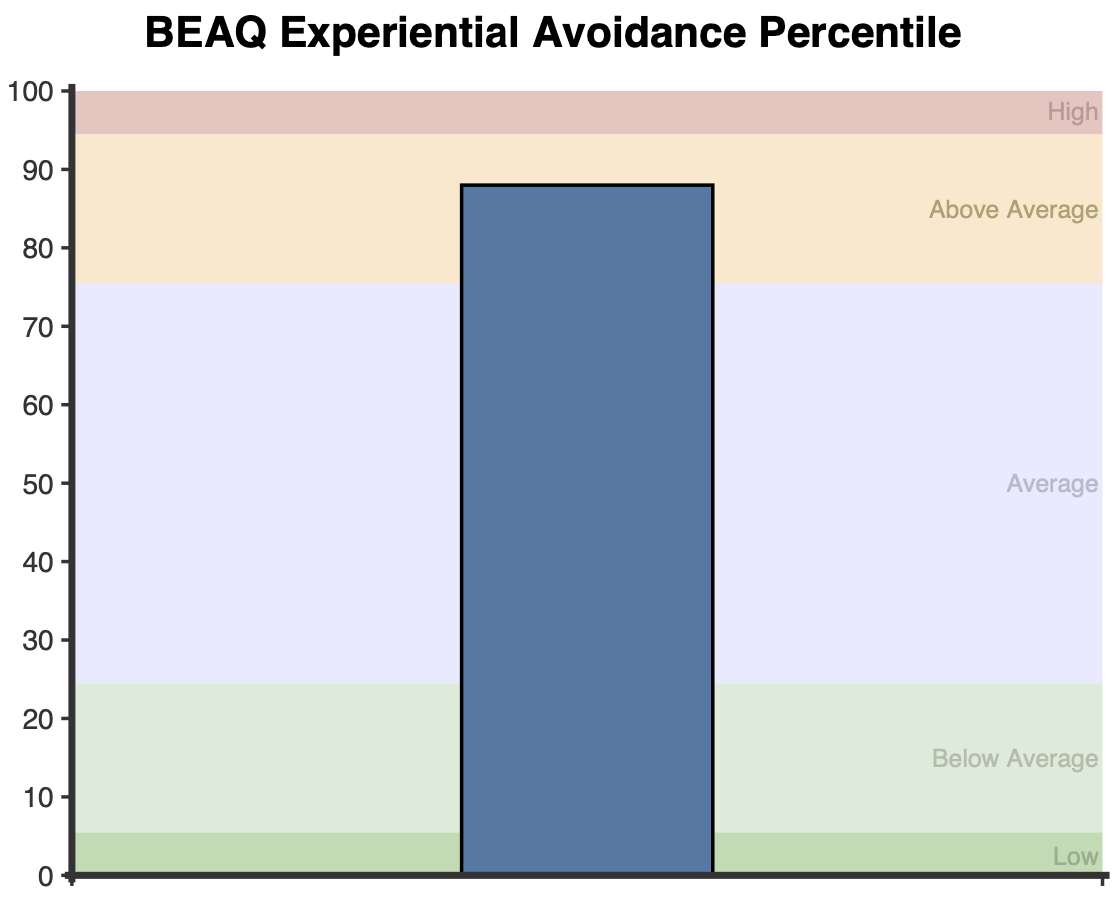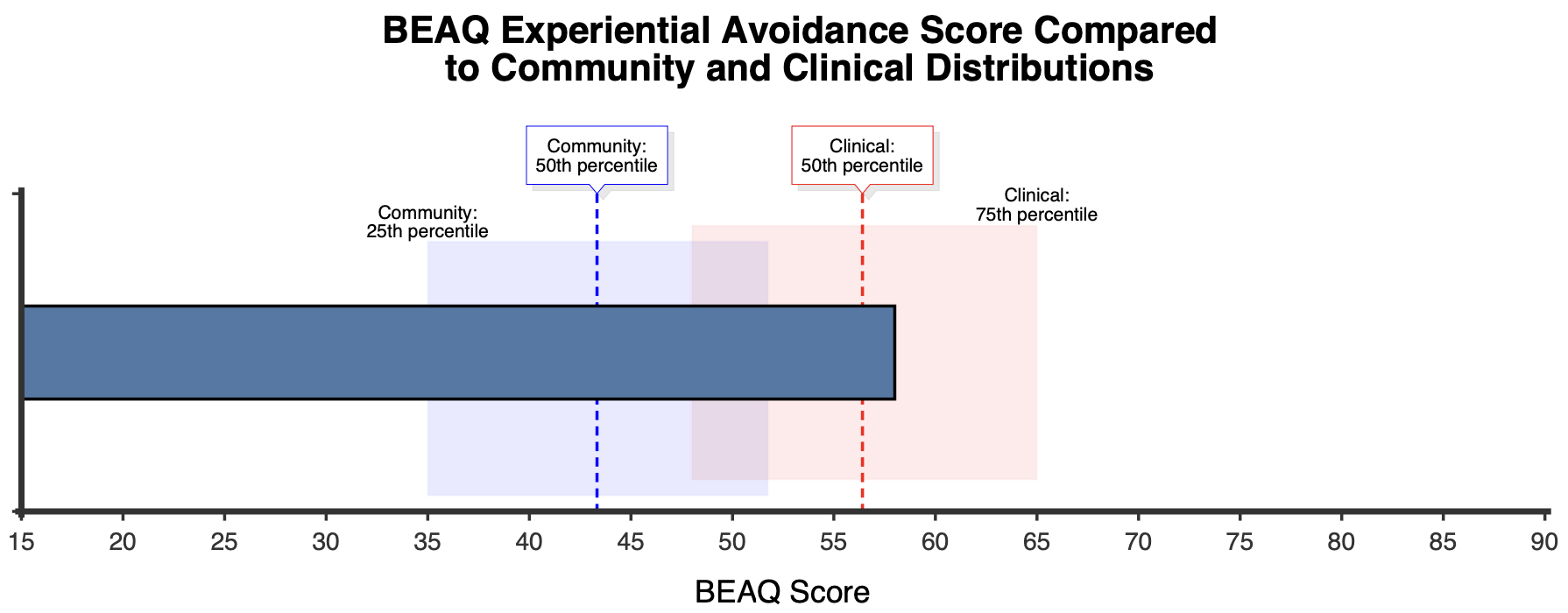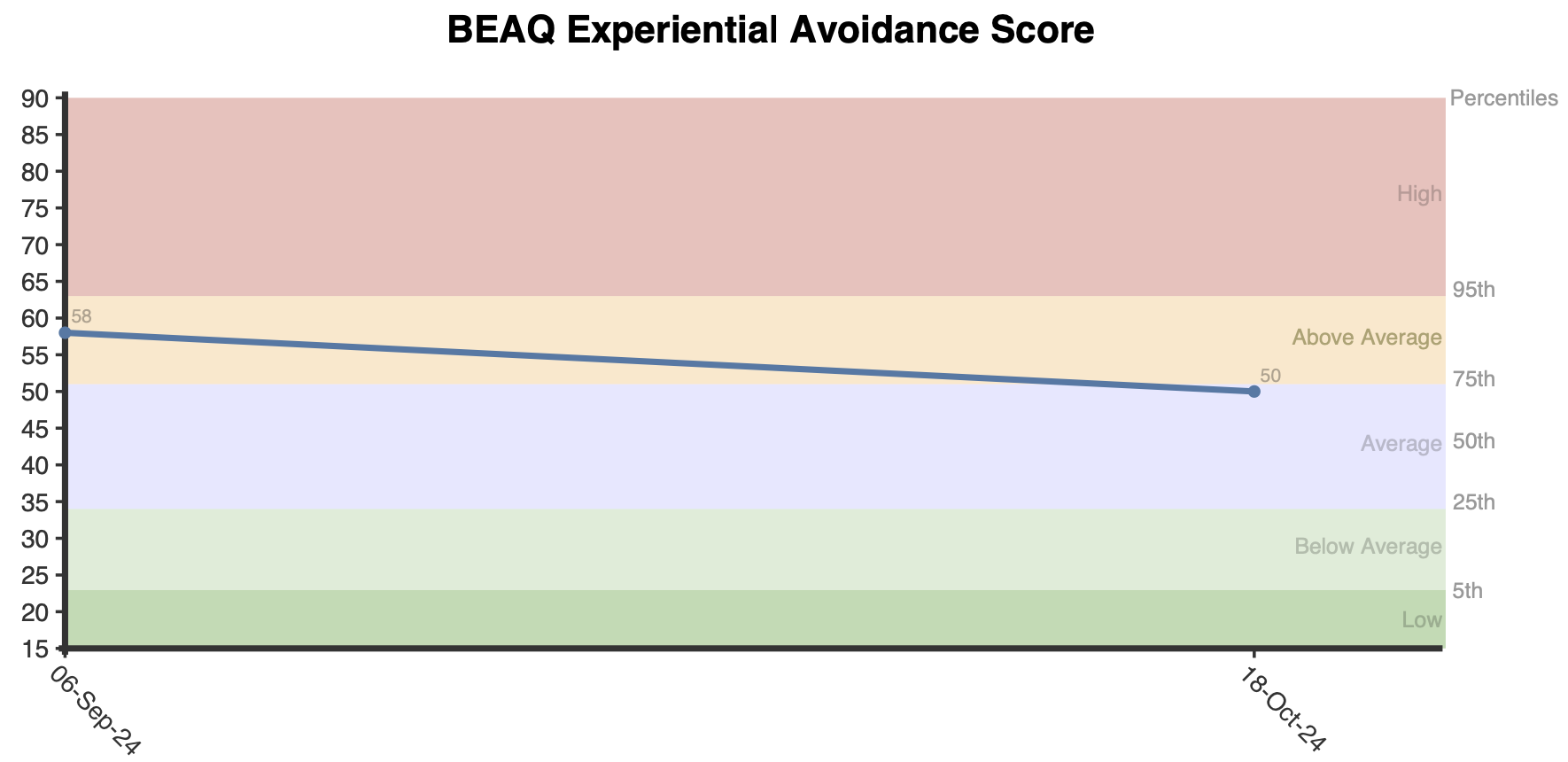The Brief Experiential Avoidance Questionnaire (BEAQ) assesses an individual’s tendency to avoid uncomfortable emotions, thoughts, memories, or sensations (Gámez et al., 2014).
The Brief Experiential Avoidance Questionnaire (BEAQ) is a 15-item self-report measure that assesses an individual’s tendency to avoid or escape from unwanted internal experiences, such as uncomfortable emotions, thoughts, memories, or sensations (Gámez et al., 2014). This tendency, known as experiential avoidance, contrasts with psychological flexibility, which is the ability to remain open to and accept such experiences. Interventions like Acceptance and Commitment Therapy (ACT) aim to increase psychological flexibility by reducing experiential avoidance, helping individuals accept discomfort in pursuit of meaningful activities.
The BEAQ is a valuable tool for assessing tendencies related to experiential avoidance, providing insights that can inform tailored interventions. Repeated administration of the BEAQ can help monitor changes in experiential avoidance over time and therefore response to therapeutic approaches like ACT.
Research shows that individuals in clinical care typically score higher on the BEAQ than those in the community (Gámez et al., 2014). Higher levels of experiential avoidance can contribute to the development or maintenance of various difficulties relating to mental health and well-being by impairing an individual’s ability to cope with discomfort or distress. Avoiding uncomfortable internal experiences may provide short-term relief, but over time it becomes a maladaptive strategy, restricting engagement in meaningful activities and increasing psychological distress. Thus, individuals in clinical care are more likely to exhibit higher levels of experiential avoidance.
The Brief Experiential Avoidance Questionnaire (BEAQ) yields a total score between 15 and 90, with higher scores indicating greater levels of experiential avoidance.

The total score is presented as a percentile based on normative data from a community sample of adults (Gámez et al., 2014), contextualising the respondent’s score relative to the typical level of experiential avoidance among individuals in the community.

Qualitative descriptors categorise the total score based on specific ranges of percentiles.
An above average or high score suggests that the respondent tends to rely on avoidance as a coping strategy for uncomfortable internal experiences. This reflects lower levels of psychological flexibility and may be associated with difficulties relating to mental health and well-being. Lower scores suggest adaptive psychological flexibility and greater acceptance of internal experiences, even when they are uncomfortable or distressing.
A graph is presented comparing the respondent’s score to the normative distribution of scores among adults in the community and a clinical sample of adults presenting for treatment in mental health outpatient clinics, with shaded areas corresponding to scores between the 25th and 75th percentile (Gámez et al., 2014). This graph contextualises the respondent’s score relative to typical levels of experiential avoidance among adults in the community and those presenting for treatment in mental health clinics.

If administered more than once, a meaningful change in experiential avoidance is defined as a change of 6 or more points in the total score based on a Minimally Important Difference (MID) calculation.

The Brief Experiential Avoidance Questionnaire (BEAQ; Gámez et al., 2014) is a shortened version of the 62-item Multidimensional Experiential Avoidance Questionnaire (MEAQ; Gámez et al., 2011). The BEAQ retains the breadth of experiential avoidance dimensions from the original MEAQ, including behavioral avoidance, distress aversion, procrastination, distraction/suppression, repression/denial, and distress endurance. It also maintains a unidimensional factor structure, reflecting its coherence in capturing a general experiential avoidance construct. The BEAQ demonstrates strong internal consistency, with Cronbach’s alpha values ranging from 0.86 to 0.89 in community samples and 0.83 in clinical samples.
The BEAQ shows strong correlations with the MEAQ and other measures of avoidance, indicating good convergent validity. Additionally, it shows correlations that indicate closer alignment with avoidance-based constructs than with general negative affect, demonstrating good discriminant validity by differentiating experiential avoidance from negative emotionality and neuroticism. Furthermore, the BEAQ effectively detects population-level differences in experiential avoidance, with higher scores observed in clinical samples compared to community samples, demonstrating its sensitivity in measuring a clinically relevant construct (Gámez et al., 2014).
A community sample of 215 adults (aged 24 to 67 years, Mean = 38.18 years, SD = 11.20 years) recruited through an advertisement in a newsletter available to employees and visitors at a large hospital in the Midwestern United States, and a clinical sample of 265 adults (aged 18 to 79 years, Mean = 42.88 years, SD = 13.59 years) recruited from various mental health outpatient clinics (including an outpatient clinic of an academic psychiatry department, a clinic of a psychology department, a community mental health clinic, and two private clinics) in the Northeastern United States, had the following total scores on the BEAQ (Gámez et al., 2014).
The above means and SDs are used to convert the respondent’s score to percentiles, providing useful information about their level of experiential avoidance relative to adults in the community and those presenting for treatment in mental health clinics.
Percentiles for BEAQ scores among adults in the community and those presenting for treatment in mental health clinics are presented below (Gámez et al., 2014). Percentiles indicate the percentage of people in the normative sample who scored the same as or lower than a given score. For example, a score of 58 corresponds to the 88th percentile in the community sample, indicating that 88% of that sample have a score of 58 or lower. The same score (i.e., 58) corresponds to the 55th percentile in the clinical sample, indicating that 55% of that sample have a score of 58 or lower. The scores and corresponding percentiles are categorised as follows: Low (Green), Below Average (Light Green), Average (Blue), Above Average (Orange), and High (Red).

Gámez, W., Chmielewski, M., Kotov, R., Ruggero, C., Suzuki, N., & Watson, D. (2014). The Brief Experiential Avoidance Questionnaire: Development and initial validation. Psychological Assessment, 26(1), 35-45. https://doi.org/10.1037/a0034473
Gámez, W., Chmielewski, M., Kotov, R., Ruggero, C., & Watson, D. (2011). Development of a measure of experiential avoidance: The Multidimensional Experiential Avoidance Questionnaire. Psychological Assessment, 23, 692-713. https://doi.org/10.1037/a0023242
Gámez, W., Chmielewski, M., Kotov, R., Ruggero, C., Suzuki, N., & Watson, D. (2014). The Brief Experiential Avoidance Questionnaire: Development and initial validation. Psychological Assessment, 26(1), 35-45. https://doi.org/10.1037/a0034473
NovoPsych’s mission is to help mental health services use psychometric science to improve client outcomes.
© 2023 Copyright – NovoPsych – All rights reserved